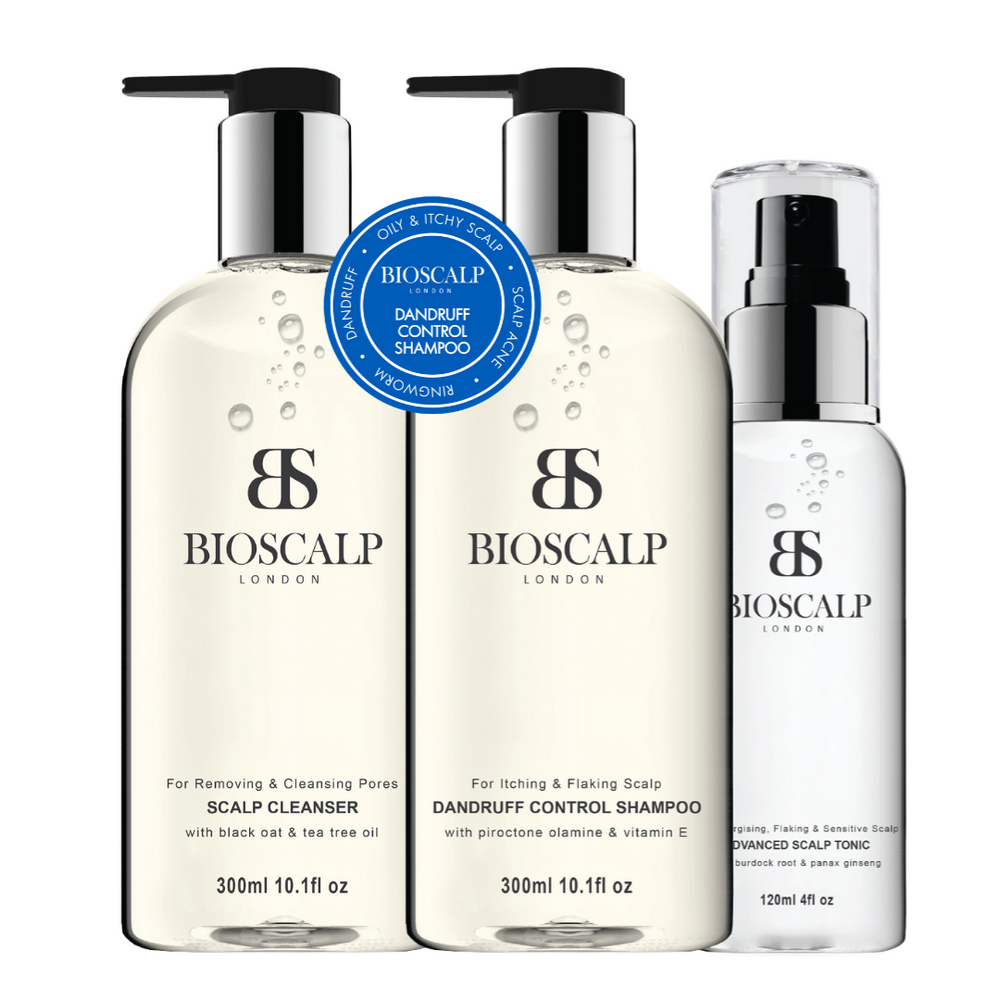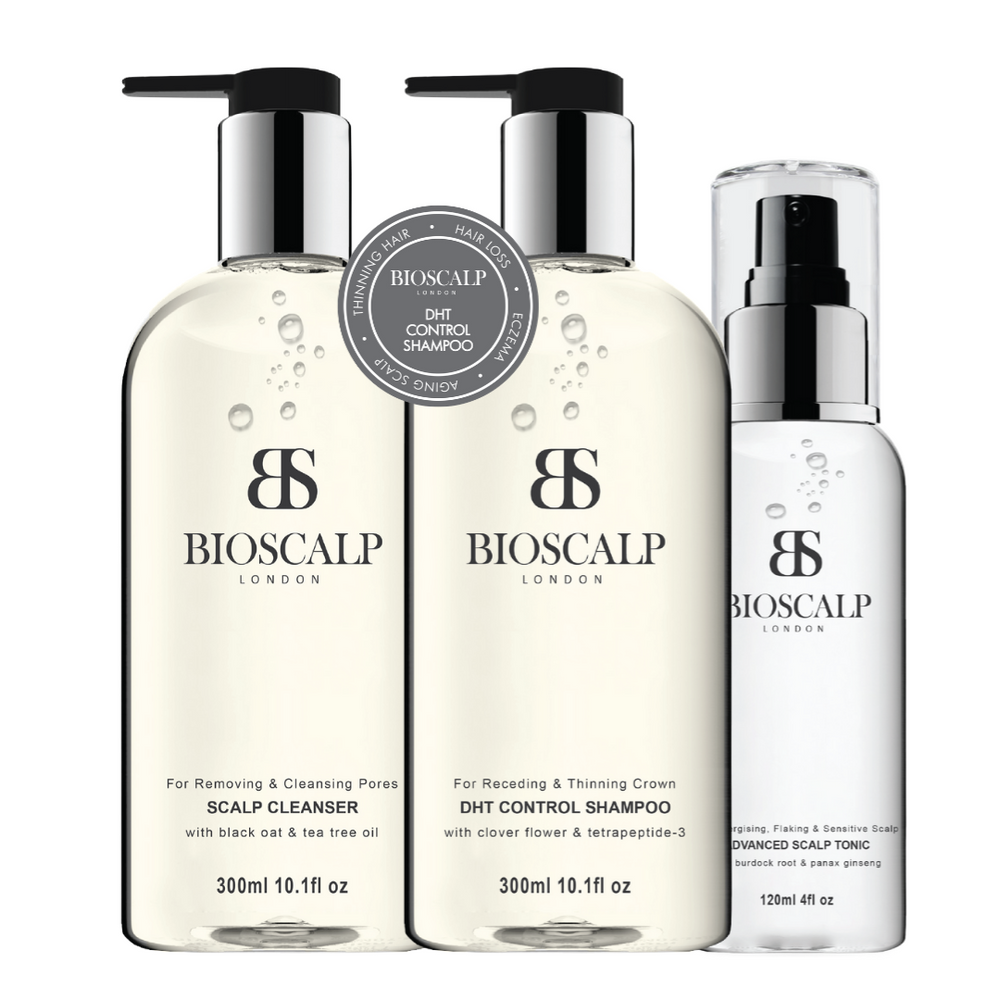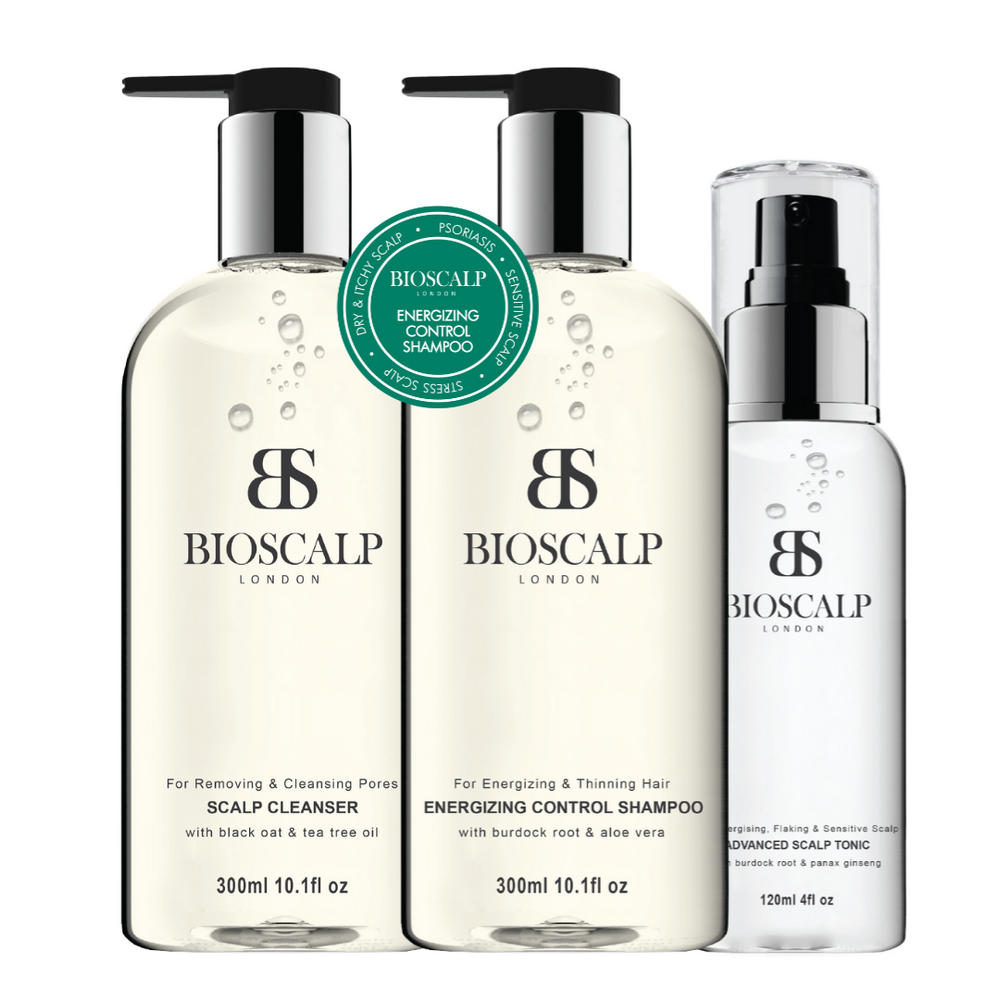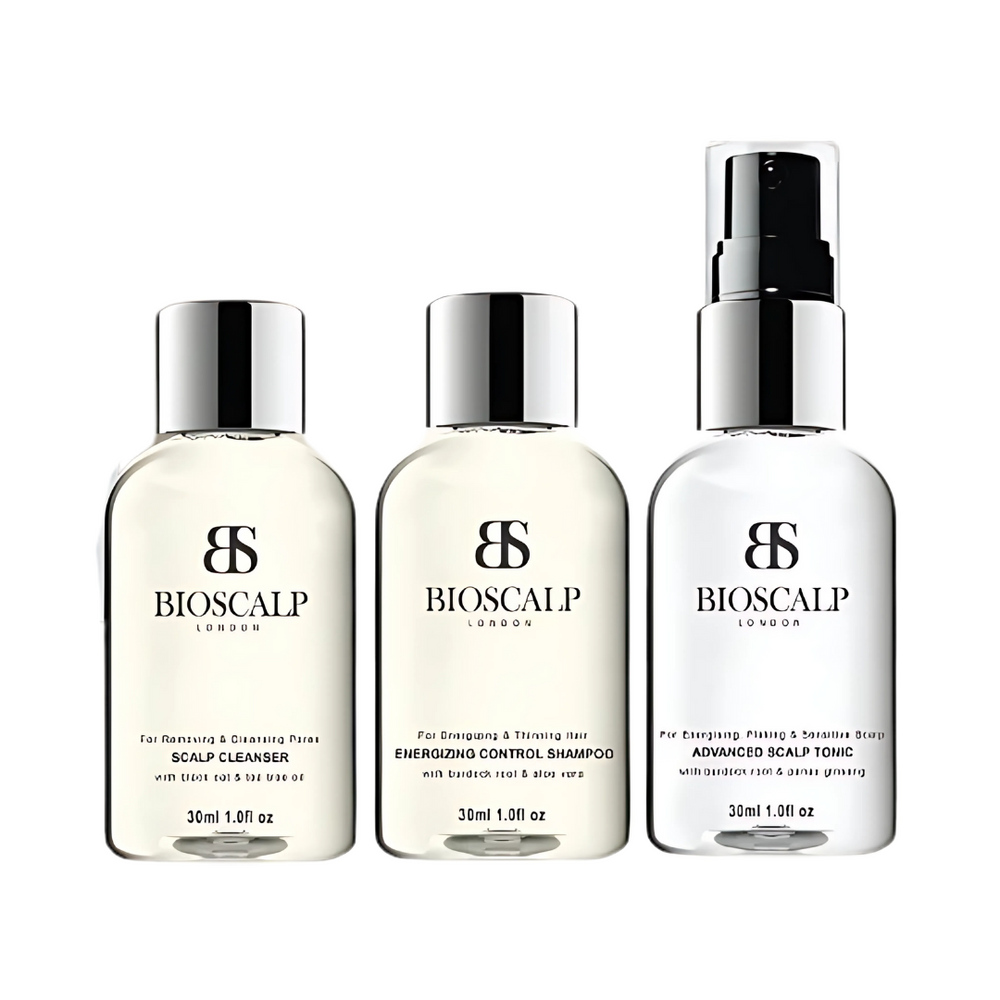If you're dealing with persistent dandruff, itchy scalp, or flaking that won't go away despite using regular shampoos, you might be dealing with Malassezia overgrowth. This comprehensive guide will help you understand what Malassezia is, how to identify it, and most importantly, how to effectively treat it.

What Is Malassezia and Why Should You Care?
Malassezia is a naturally occurring fungus (yeast) that lives on everyone's scalp. Under normal conditions, it's harmless and even plays a role in maintaining scalp health. However, when this fungus grows out of control, it can lead to various scalp problems, including severe dandruff, seborrheic dermatitis, and even hair loss.
Key Facts About Malassezia:
- Present on all human scalps naturally
- Feeds on scalp oils (sebum)
- Produces oleic acid as a byproduct
- About 50% of people are sensitive to this oleic acid
- Can cause inflammation, itching, and flaking when overgrown
How to Identify Malassezia Overgrowth on Your Scalp
Understanding whether you're dealing with Malassezia overgrowth versus regular dry scalp is crucial for effective treatment. Here are the telltale signs:
Common Symptoms of Scalp Malassezia:
- Persistent white or yellowish flakes that don't improve with regular shampooing
- Intense itching that often appears before visible flaking
- Red or purple patches on the scalp
- Greasy, oily scales rather than dry flakes
- Hair loss or thinning in affected areas
- Worsening symptoms in warm, humid weather
- Scalp tenderness or soreness
How It Differs from Regular Dandruff:
Unlike simple dry scalp, Malassezia-related conditions:
- Don't respond to moisturizing treatments
- May worsen with oil-based products
- Require antifungal treatment rather than just hydration
- Often come with inflammation and redness

Proven Medical Treatments for Scalp Malassezia
1. Antifungal Shampoos: Your First Line of Defense
The most effective treatment for Malassezia overgrowth involves specialized antifungal shampoos. Research shows that certain ingredients are particularly effective:
Most Effective Antifungal Ingredients:
- Piroctone olamine: Gentle yet effective antifungal that also reduces scalp irritation
- Ketoconazole (2%): Clinical studies show it's statistically superior to other treatments
- Selenium sulfide: Effective but may require longer treatment periods
- Zinc pyrithione: Helps control fungal growth and reduce inflammation
- Terbinafine: Powerful antifungal with good scalp penetration
How to Use Antifungal Shampoos Correctly:
- Apply to wet scalp and work into a lather
- Leave on for 5 minutes before rinsing (this is crucial!)
- Use 2-3 times per week initially
- Reduce to weekly maintenance once symptoms improve
- Continue maintenance therapy to prevent recurrence
2. Professional-Grade Treatment Solutions
For those seeking comprehensive treatment that goes beyond basic antifungal shampoos, professional-grade solutions offer superior results. The BioScalp Dandruff Control Shampoo represents an advanced approach to Malassezia treatment, combining multiple active ingredients with scalp-nourishing compounds.
This specialized formulation works by:
- Targeting fungal overgrowth with broad-spectrum antifungal activity
- Reducing inflammation to calm irritated scalp tissue
- Balancing scalp microbiome for long-term health
- Providing gentle cleansing without stripping natural oils
Unlike harsh medicated shampoos that can leave hair dry and brittle, professional formulations maintain hair health while effectively treating the underlying fungal condition. The key is finding a balance between potent antifungal action and scalp/hair care.
3. Comprehensive Treatment Kits for Stubborn Cases
When dealing with persistent Malassezia overgrowth, a multi-step approach often yields the best results. The BioScalp Dandruff Control Kit offers a complete treatment system designed to address all aspects of fungal scalp conditions.
A comprehensive kit approach provides:
- Step-by-step treatment protocol for consistent results
- Multiple complementary products working synergistically
- Both cleansing and treatment phases for thorough fungal removal
- Scalp barrier restoration to prevent future overgrowth
- Professional-grade ingredients not available in regular products
This systematic approach is particularly beneficial for those who have tried individual products without success, as it addresses the biofilm formations that can make Malassezia particularly resistant to treatment.
Natural and Home Remedies That Actually Work
While medical treatments are most effective, several natural remedies can complement your antifungal regimen:
Evidence-Based Natural Treatments:
1. Tea Tree Oil
- Natural antifungal properties
- Mix 5-10 drops with carrier oil
- Massage into scalp before shampooing
- Leave for 30 minutes before washing
2. Apple Cider Vinegar Rinse
- Creates acidic environment hostile to fungi
- Mix 1 part ACV with 3 parts water
- Use as final rinse after shampooing
- Do not use on broken or irritated skin
3. Aloe Vera
- Soothes inflammation and promotes healing
- Apply pure aloe gel to scalp
- Leave for 20 minutes before rinsing
- Can be used daily for symptom relief
4. Sea Salt Scrub
- Helps remove fungal buildup and dead skin
- Mix with water to create paste
- Gently massage into scalp
- Rinse thoroughly
Long-Term Management Strategies
Successfully treating Malassezia requires more than just initial treatment—it needs ongoing management:
Lifestyle Modifications:
- Reduce stress: Stress can trigger flare-ups
- Limit sugar intake: Fungi thrive on sugar
- Wash hair regularly: But not excessively (2-3 times per week)
- Avoid heavy hair products: Especially oil-based ones
- Keep scalp dry: Especially after exercise
Maintenance Protocol:
- Continue using antifungal shampoo weekly even after symptoms clear
- Monitor for early signs of recurrence
- Adjust treatment frequency based on symptoms
- Consider seasonal adjustments (increase in humid weather)

When to Seek Professional Help
While many cases of Malassezia can be managed at home, certain situations require medical attention:
- Symptoms persist after 4-6 weeks of treatment
- Significant hair loss occurs
- Scalp shows signs of infection (pus, severe redness, fever)
- Condition spreads beyond the scalp
- You have underlying health conditions affecting immunity
Understanding Treatment Expectations
It's important to have realistic expectations about Malassezia treatment:
Timeline for Improvement:
- Week 1-2: Initial reduction in itching
- Week 2-4: Visible decrease in flaking
- Week 4-8: Significant improvement in all symptoms
- Ongoing: Maintenance therapy to prevent recurrence
Why Treatment Takes Time:
- Fungal infections are stubborn and slow to clear
- Biofilms protect fungi from treatment
- Scalp needs time to restore healthy balance
- Individual responses vary based on severity
Preventing Future Malassezia Overgrowth
Prevention is always better than treatment. Here's how to keep Malassezia under control:
Daily Prevention Tips:
- Use a gentle, pH-balanced shampoo
- Avoid sharing hair tools or accessories
- Change pillowcases regularly
- Manage scalp oil production
- Maintain overall scalp hygiene
Environmental Considerations:
- Use a dehumidifier in humid climates
- Dry hair thoroughly after washing
- Avoid wearing hats for extended periods
- Choose breathable hair accessories
Conclusion: Taking Control of Your Scalp Health
Dealing with Malassezia overgrowth can be frustrating, but with the right approach, it's entirely manageable. The key is understanding that this is a chronic condition requiring ongoing attention rather than a one-time fix.
Start with proven antifungal treatments, whether medical shampoos or comprehensive treatment systems. Be consistent with your chosen treatment method, allowing adequate time for results. Remember that professional-grade solutions often provide better outcomes than repeated trials of over-the-counter products.
Most importantly, don't let Malassezia control your life. With proper treatment and management, you can achieve a healthy, comfortable scalp and regain your confidence. Whether you choose medical treatments, natural remedies, or a combination approach, the path to a fungus-free scalp starts with taking that first step today.
Quick Action Steps:
- Identify your symptoms accurately
- Choose an appropriate antifungal treatment
- Follow the treatment protocol consistently
- Implement preventive measures
- Maintain long-term scalp health
Remember, everyone's scalp is different, and what works for one person may need adjustment for another. Be patient with the process, and don't hesitate to seek professional guidance if home treatments aren't providing the relief you need.








